I will not grieve their patience, however, by describing minutely the increase and improvement of New Amsterdam. Their own imaginations will doubtless present to them the good burghers, like so many painstaking and persevering beavers, slowly and surely pursuing their labors—they will behold the prosperous transformation from the rude log hut to the stately Dutch mansion, with brick front, glazed windows, and tiled roof; from the tangled thicket to the luxuriant cabbage garden; and from the skulking Indian to the ponderous burgomaster. In a word, they will picture to themselves the steady, silent, and undeviating march of prosperity, incident to a city destitute of pride or ambition, cherished by a fat government, and whose citizens do nothing in a hurry.
The sage council, as has been mentioned in a preceding chapter, not being able to determine upon any plan for the building of their city, the cows, in a laudable fit of patriotism, took it under their peculiar charge, and as they went to and from pasture, established paths through the bushes, on each side of which the good folks built their houses; which is one cause of the rambling and picturesque turns and labyrinths, which distinguish certain streets of New York at this very day.
The houses of the higher class were generally constructed of wood, excepting the gable end, which was of small black and yellow Dutch bricks, and always faced on the street, as our ancestors, like their descendants, were very much given to outward show, and were noted for putting the best leg foremost. The house was always furnished with abundance of large doors and small windows on every floor, the date of its erection was curiously designated by iron figures on the front, and on the top of the roof was perched a fierce little weathercock, to let the family into the important secret which way the wind blew. These, like the weathercocks on the tops of our steeples, pointed so many different ways, that every man could have a wind to his mind;—the most staunch and loyal citizens, however, always went according to the weathercock on the top of the governor's house, which was certainly the most correct, as he had a trusty servant employed every morning to climb up and set it to the right quarter.
In those good days of simplicity and sunshine, a passion for cleanliness was the leading principle in domestic economy, and the universal test of an able housewife—a character which formed the utmost ambition of our unenlightened grandmothers. The front door was never opened except on marriages, funerals, new year's days, the festival of St. Nicholas, or some such great occasion. It was ornamented with a gorgeous brass knocker, curiously wrought, sometimes in the device of a dog, and sometimes of a lion's head, and was daily burnished with such religious zeal, that it was oft–times worn out by the very precautions taken for its preservation. The whole house was constantly in a state of inundation, under the discipline of mops and brooms and scrubbing brushes; and the good housewives of those days were a kind of amphibious animal, delighting exceedingly to be dabbling in water—insomuch that an historian of the day gravely tells us, that many of his townswomen grew to have webbed fingers like unto a duck; and some of them, he had little doubt, could the matter be examined into, would be found to have the tails of mermaids; but this I look upon to be a mere sport of fancy, or, what is worse, a wilful misrepresentation.
The grand parlor was the sanctum sanctorum , where the passion for cleaning was indulged without control. In this sacred apartment no one was permitted to enter excepting the mistress and her confidential maid, who visited it once a week, for the purpose of giving it a thorough cleaning, and putting things to rights; always taking the precaution of leaving their shoes at the door, and entering devoutly on their stocking feet. After scrubbing the floor, sprinkling it with fine white sand, which was curiously stroked into angles, and curves, and rhomboids with a broom; after washing the windows, rubbing and polishing the furniture, and putting a bunch of evergreens in the fireplace—the window shutters were again closed to keep out the flies, and the room carefully locked up until the revolution of time brought round the weekly cleaning day.
As to the family, they always entered in at the gate, and most generally lived in the kitchen. To have seen a numerous household assembled round the fire, one would have imagined that he was transported back to those happy days of primeval simplicity, which float before our imaginations like golden visions. The fireplaces were of a truly patriarchal magnitude, where the whole family, old and young, master and servant, black and white, nay, even the very cat and dog, enjoyed a community of privilege, and had each a right to a corner. Here the old burgher would sit in perfect silence, puffing his pipe, looking into the fire with half–shut eyes, and thinking of nothing for hours together; the goede vrouw, on the opposite side, would employ herself diligently in spinning yarn or knitting stockings. The young folks would crowd around the hearth, listening with breathless attention to some old crone of a negro, who was the oracle of the family, and who, perched like a raven in the corner of a chimney, would croak forth for a long winter afternoon a string of incredible stories about New England witches, grisly ghosts, horses without heads, and hair–breadth escapes and bloody encounters among the Indians.
In those happy days a well–regulated family always rose with the dawn, dined at eleven, and went to bed at sunset. Dinner was invariably a private meal, and the fat old burghers showed incontestable signs of disapprobation and uneasiness at being surprised by a visit from a neighbor on such occasions. But though our worthy ancestors were thus singularly averse to giving dinners, yet they kept up the social bands of intimacy by occasional banquettings, called tea–parties.
These fashionable parties were generally confined to the higher classes, or noblesse: that is to say, such as kept their own cows and drove their own waggons. The company commonly assembled at three o'clock, and went away about six, unless it was in winter time, when the fashionable hours were a little earlier, that the ladies might get home before dark. The tea–table was crowned with a huge earthen dish, well stored with slices of fat pork, fried brown, cut up into morsels, and swimming in gravy. The company being seated round the genial board, and each furnished with a fork, evinced their dexterity in launching at the fattest pieces in this mighty dish—in much the same manner as sailors harpoon porpoises at sea, or our Indians spear salmon in the lakes. Sometimes the table was graced with immense apple–pies, or saucers full of preserved peaches and pears; but it was always sure to boast an enormous dish of balls of sweetened dough, fried in hog's fat, and called doughnuts, or olykoeks—a delicious kind of cake, at present scarce known in this city, except in genuine Dutch families.
The tea was served out of a majestic delf teapot, ornamented with paintings of fat little Dutch shepherds and shepherdesses, tending pigs, with boats sailing in the air, and houses built in the clouds, and sundry other ingenious Dutch fantasies. The beaux distinguished themselves by their adroitness in replenishing this pot from a huge copper tea–kettle, which would have made the pigmy macaronies of these degenerate days sweat merely to look at it. To sweeten the beverage, a lump of sugar was laid beside each cup, and the company alternately nibbled and sipped with great decorum; until an improvement was introduced by a shrewd and economic old lady, which was to suspend a large lump directly over the tea–table by a string from the ceiling, so that it could be swung from mouth to mouth—an ingenious expedient, which is still kept up by some families in Albany, but which prevails without exception in Communipaw, Bergen Flatbush, and all our uncontaminated Dutch villages.
Читать дальше











